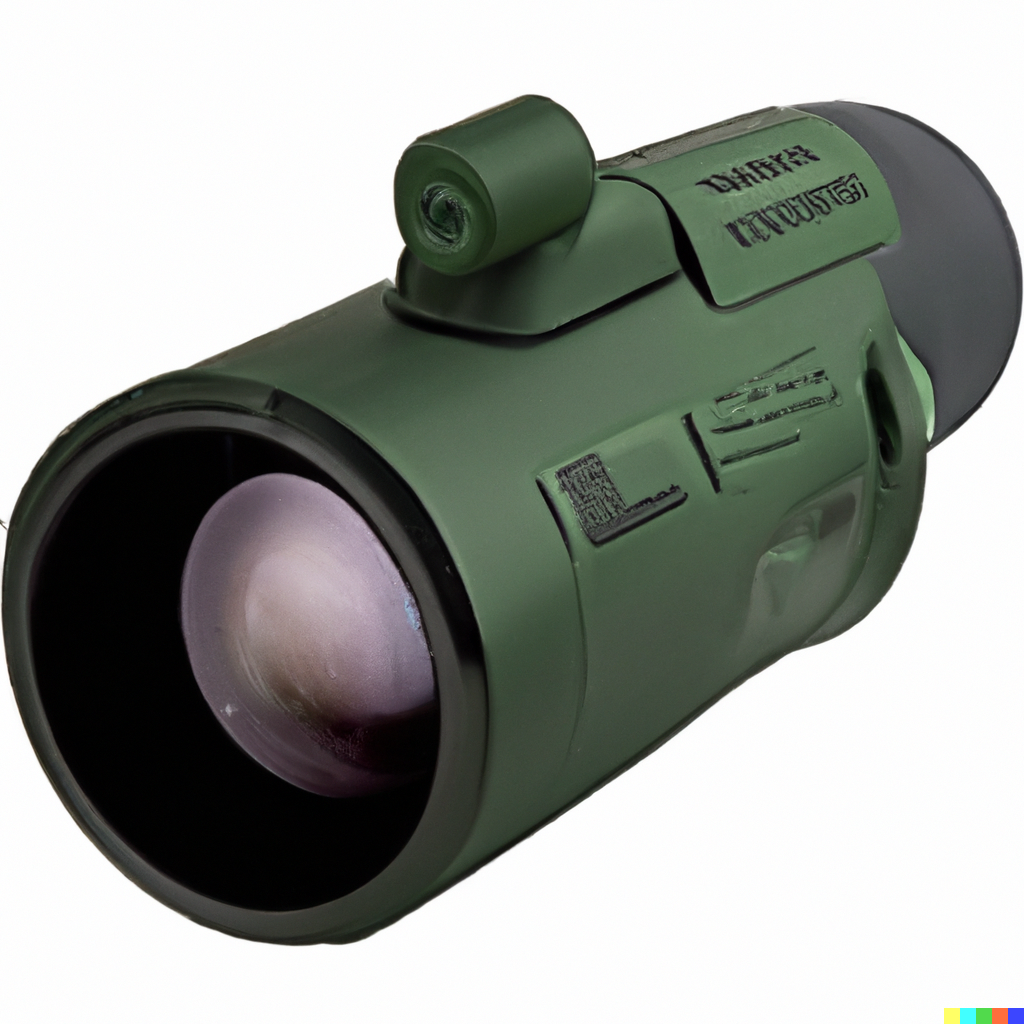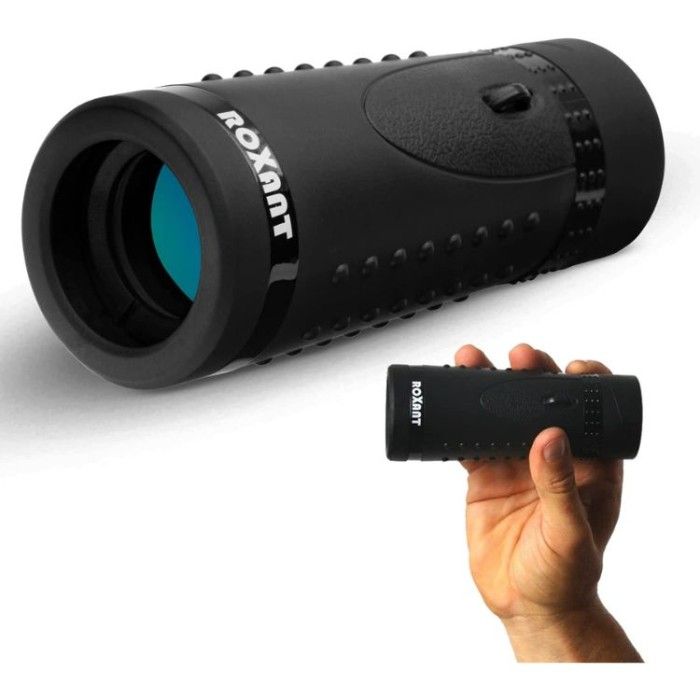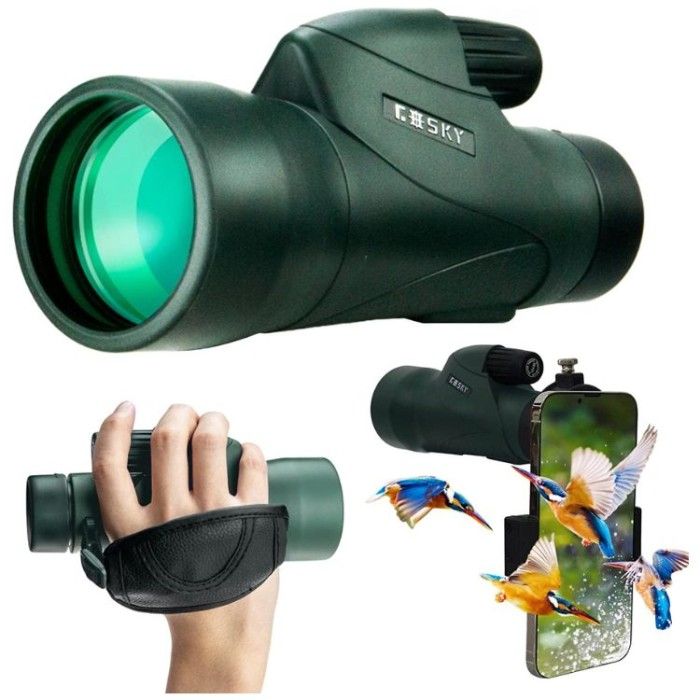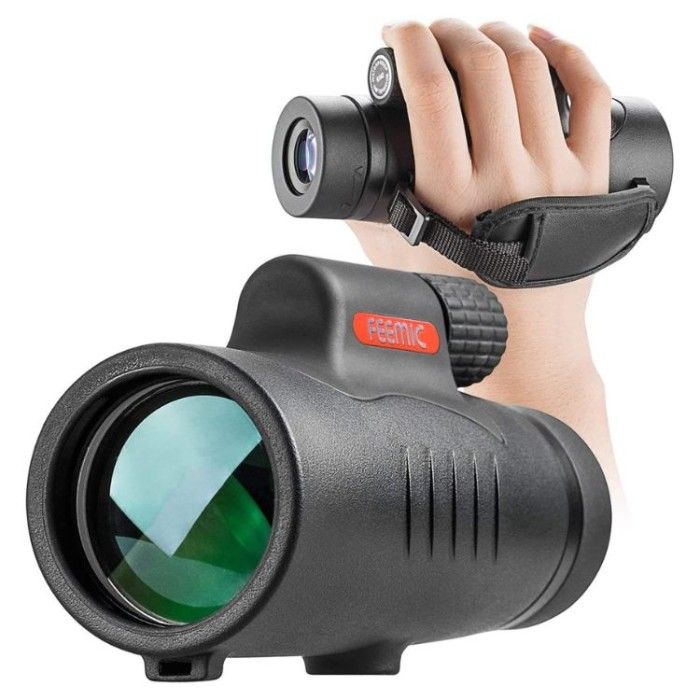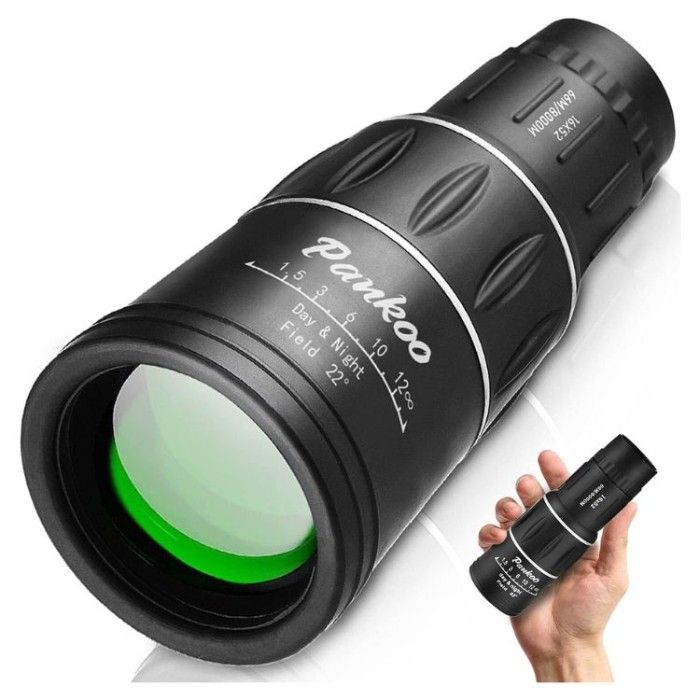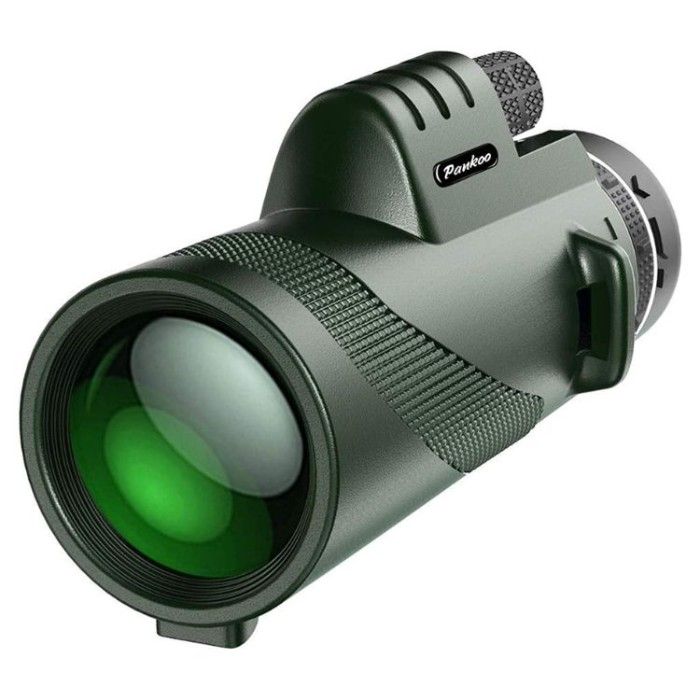Have you ever dreamed of getting lost in the beauty of the stars, or simply gazing up at the night sky and feeling a sense of wonder? With the best hand-held telescope, you can make that dream a reality. These powerful tools are perfect for anyone looking to explore the mysteries of the universe, all from the comfort of their backyard.
Whether you're a seasoned astronomer or a curious beginner, a hand-held telescope can help you get closer to the stars and unlock the secrets of the cosmos. So why not take the plunge and start your stargazing adventure today? You never know what wonders await you in the vast expanse of the night sky.
How We Choose The Best Hand-Held Telescope
It can be hard to know which telescope is the best for you. With all of the different telescopes available on Amazon, it can be tough to figure out which one is right for you.
We're here to help. We've done the research and found the best hand-held telescope for every type of astronomer. Whether you're a beginner or an expert, we have a telescope that will fit your needs.
Roxant Monocular Telescope
Why We Love The Roxant Monocular Telescope
Upgrade your view and experience the sights with the Roxant monocular telescope. Featuring an adjustable eyecup for use with or without eyeglasses, this monocular telescope may be small in size but is big on performance.
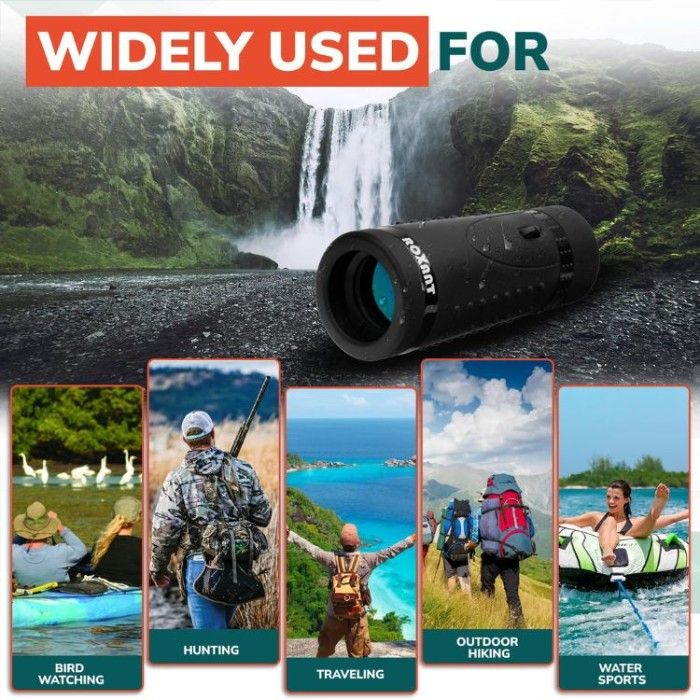
You can rest assured that you'll be viewing with optical glass and a premium, fully multi-coated Bak4 prism all-glass lens so you get superior light transmission and brightness for optimal viewing.
Plus, it comes with its carry pouch with a belt loop, cleaning cloth, and neck strap to make transportation easy. Don't miss out on an invaluable outdoor experience with the Roxant monocular telescope.
What You Should Know About The Roxant Monocular Telescope
The Roxant monocular telescope is ideal for sports events, outdoor activities, bird watching, hunting, archery, and more. With an all-glass high-end optics starscape monocular, it delivers 6x30 viewing for a better experience than ever before.
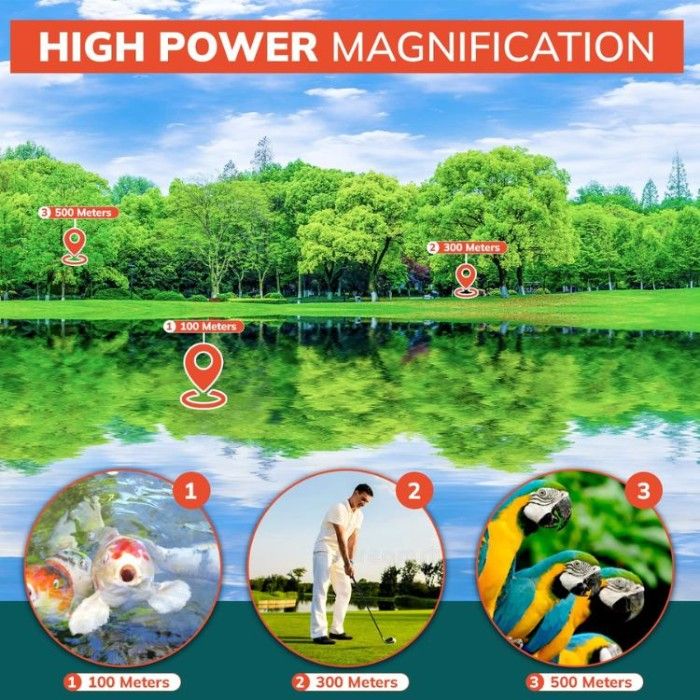
This telescope is designed for enhanced comfort and functionality with its no-slip molded grip and lightweight yet solid build. Who wouldn't want to use this device to get the best view of their favorite sports team? Get the Roxant Telescope today.
Gosky Piper Monocular Telescope
Why We Love The Gosky Piper Monocular Telescope
Are you looking for great magnification capabilities to take your business or hobby to the next level? Look no further than the Gosky Piper monocular telescope. With 12x magnifying power and a great range of view (352ft/1,000Yds), it is great for gaining those extra details in whatever you sell or watch.
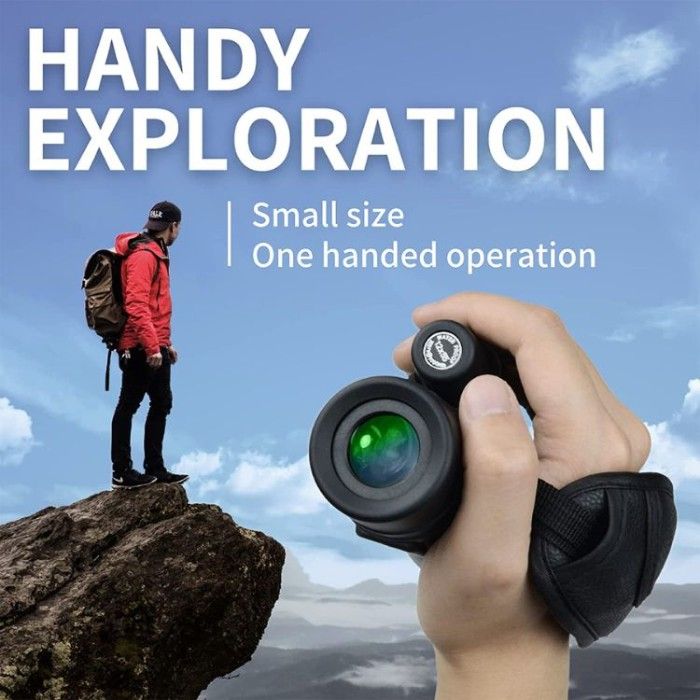
The HD monocular telescope also uses an 18mm BAK-4 optics prism and FMC (Fully Multi-Coating) lens which increases light transmittance and provides stunning clarity - all at a great price. Give yourself a great view of the world with this small telescope.
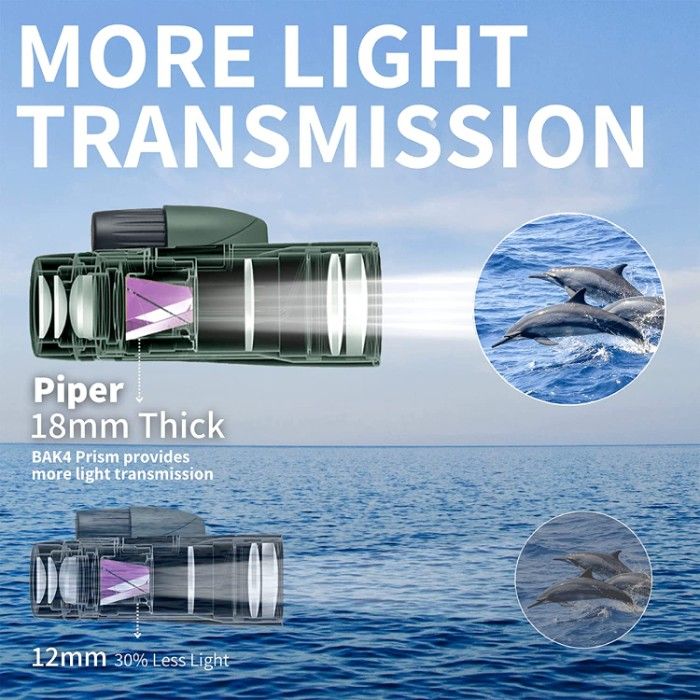
What You Should Know About The Gosky Piper Monocular Telescope
The Gosky Piper monocular telescope is an amazing piece of equipment for anyone who loves the outdoors. Not only does it come with a comfortable and portable hand strap to prevent it from slipping out of your hands, but its IPX7 nitrogen-filled design also makes it waterproof, fog-proof, dust-proof, and shockproof no matter what weather conditions you’re in.
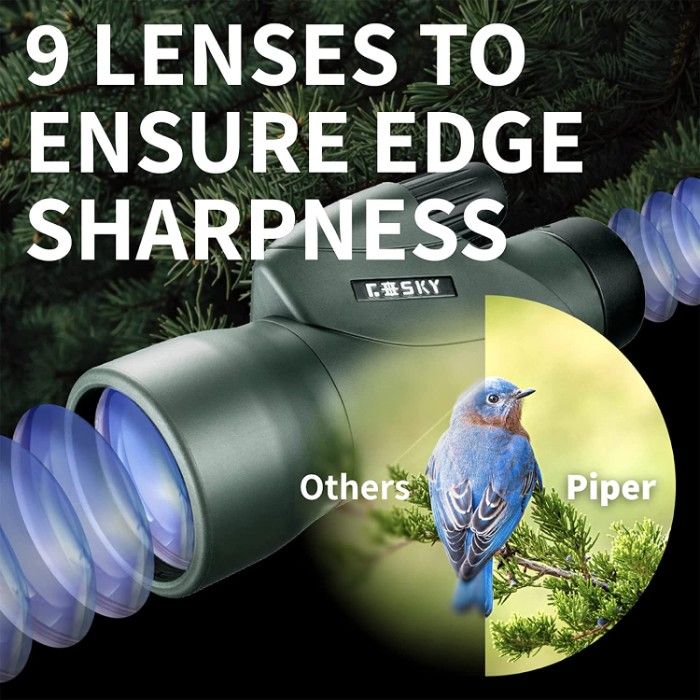
It also has a long eye relief that twists up with ease to give you a comfortable viewing experience and comes with a smartphone holder so you can get HD images any time while bird watching, hunting, hiking, camping, traveling, or taking in some beautiful scenery.
FEEMIC Monocular Telescope
Why We Love The FEEMIC Monocular Telescope
The FEEMIC monocular telescope has a great magnification of 8x and its 42mm objective diameter lens allows for great range. Its high-quality design featuring the FMC superior BAK-4 green film prism telescope makes it great for outdoor adventures, as it is dustproof, waterproof, fog proof, and shockproof.
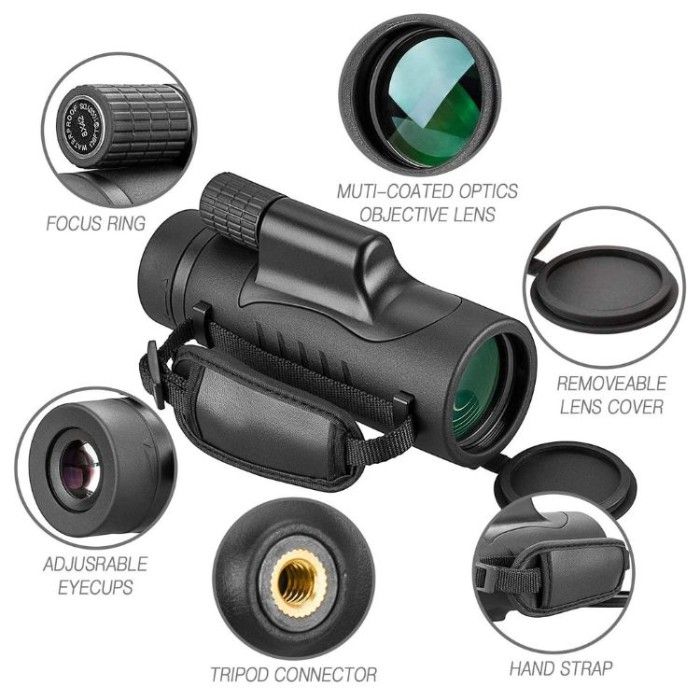
FEEMIC truly knows its business when it comes to providing quality telescopes so it's no wonder it can sell out its products. With this powerful monocular telescope, you can make sure you can always get a great range of view even in the toughest conditions.
What You Should Know About The FEEMIC Monocular Telescope
The FEEMIC monocular telescope is perfect for any outdoor enthusiast, featuring an adjustable eye cup to quickly and easily be twisted up and down depending on whether you're wearing glasses or not.
Additionally, the monocular features a low-light-level night vision built-in design so that you can see in low-light conditions. The rubber armor ensures a slip-free grip and even comes with a hand strap and carry case for easy portability.
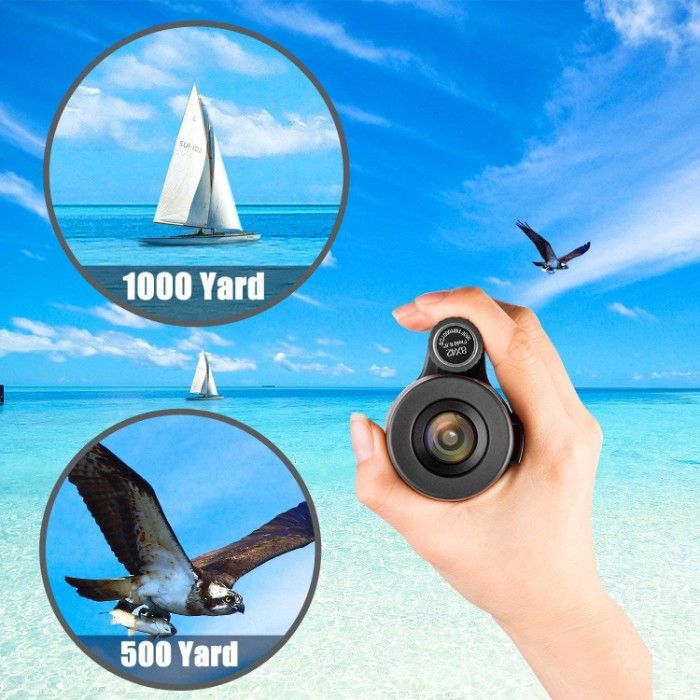
For further convenience, there is also a tripod connector at the bottom of the monocular to offer steady viewing when connected. Versatile in its uses, this monocular is ideal for RV trips, hiking, hunting, bird watching, concerts, or traveling--the perfect gift for anyone pursuing an adventure.
Pankoo Power Prism Compact Monocular
Why We Love The Pankoo Power Prism Compact Monocular
The Pankoo power monocular offers a unique viewing experience with its 16x52 HD magnification. Its advanced technology allows users a clear and bright image, no matter the range of view. It is perfect for hiking, concerts, or watching wildlife and scenery.
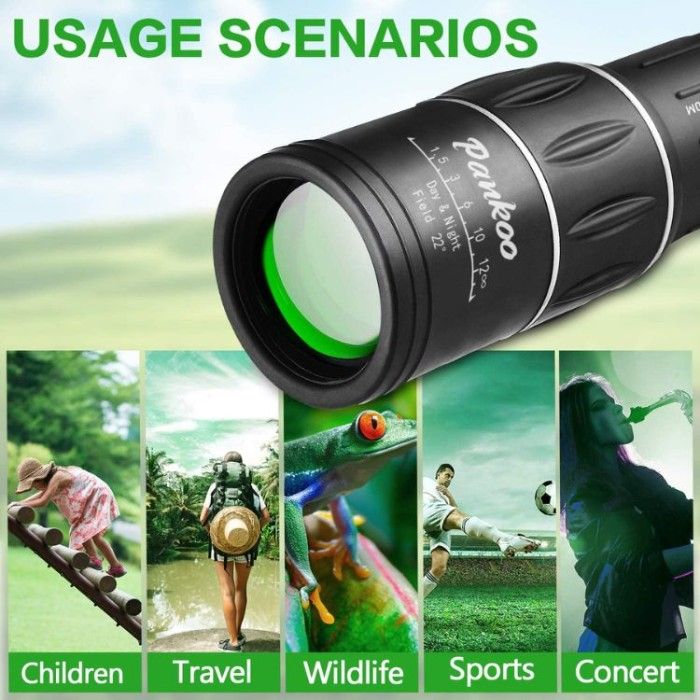
The convenience of using this monocular with one hand makes it incredibly user-friendly. Simply adjust the eyecup and focus wheel until you're able to see a crisp image, and enjoy your view. It is extremely lightweight, making it an ideal choice for nature enthusiasts or anyone who loves to explore the outdoors.
What You Should Know About Pankoo Power Prism Compact Monocular
The Pankoo monocular power prism compact monocular is designed with high-contrast and resolution images in mind. With a large objective lens, more light can enter the monocular, resulting in brighter and clearer images.
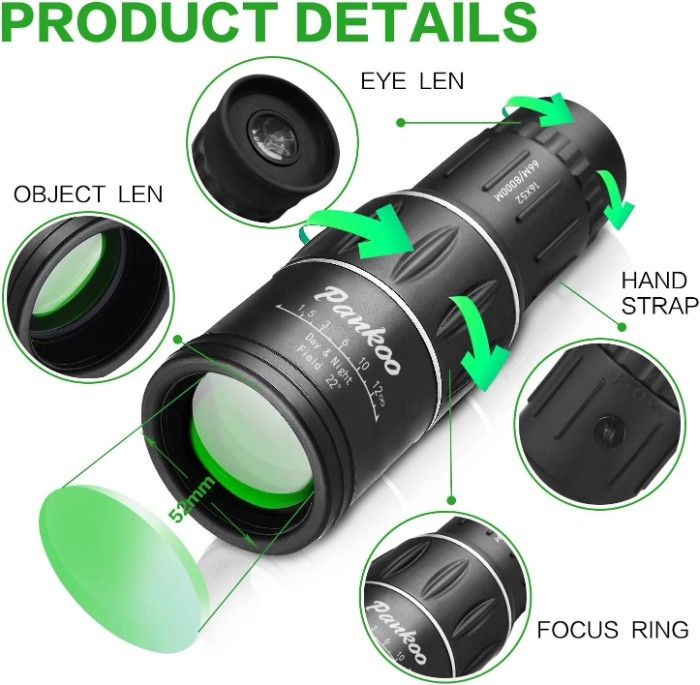
Its sturdy body is waterproof and fog-proof due to it being filled with high-purity nitrogen, making it perfect for use during rainy days or other humid environments.
And its compact size makes it easy to store without taking too much space. This monocular is sure to give you a unique viewing experience no matter when or where you take them.
Pankoo Family Night Vision Monocular
Why We Love The Pankoo Family Night Vision Monocular
The Pankoo family night vision monocular is the perfect choice for anyone looking to explore the world around them in the dark. It is equipped with a powerful BAK4 prism and a 60mm object lens diameter, allowing you to get clear, high contrast, and high-resolution images that are incredibly sharp.
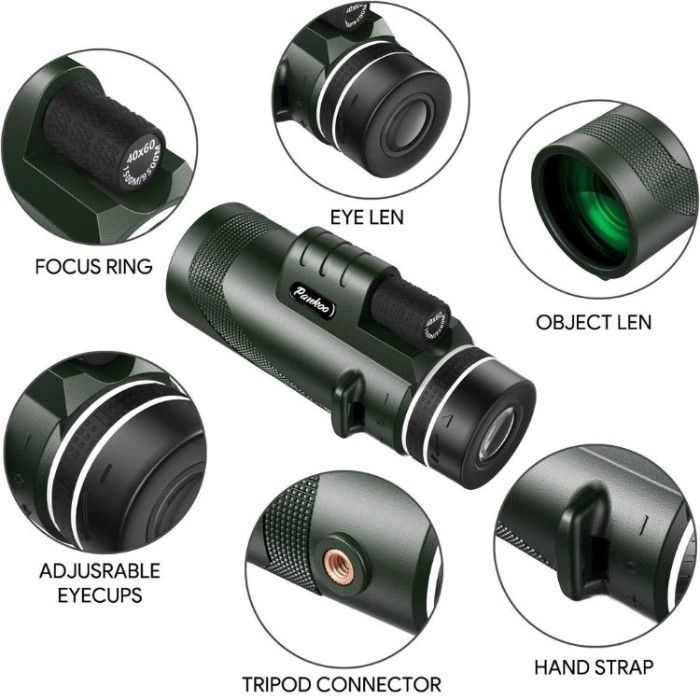
Whether you're out birdwatching, hunting, or trying to get a closer look at various sight-seeing spots, the 40X magnification power makes it easy to get a closer look at every detail without sacrificing image quality.
Plus with its single-hand operation design, you can quickly adjust the focus for optimal clarity. With the Pankoo family night vision monocular, you can get stunning shots even in dimly lit areas.
What You Should Know About The Pankoo Family Night Vision Monocular
The Pankoo family night vision monocular is ideal for any weather condition, with its waterproof and fog-proof design that allows heavy exposure to the elements. Equipped with a BAK4 prism and containing high-purity nitrogen to reduce deflection, there's no need to worry about drops or exposure when taking the monocular out in challenging climates.
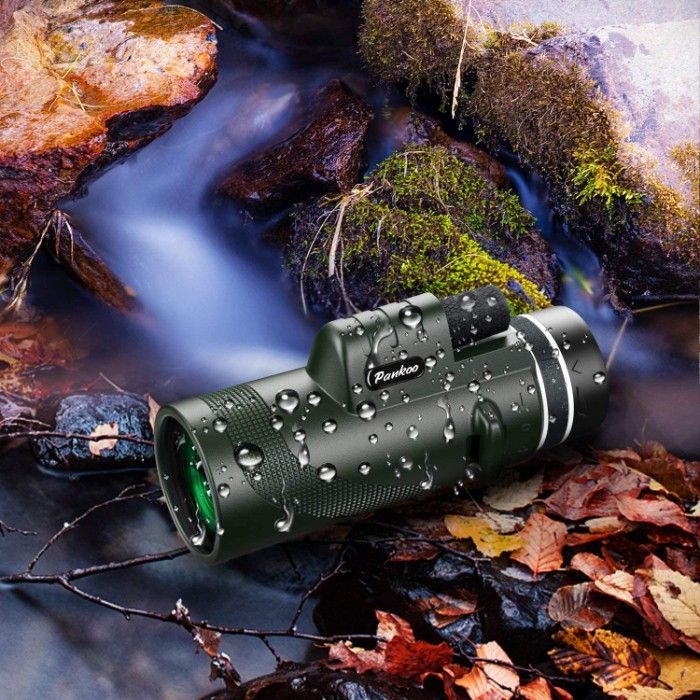
It's also designed for convenience and connectivity, it comes equipped with a quick alignment smartphone holder and tripod that make installation easy, so you can share HD images with ease with your friends.
You can even remotely control the monocular straight from your phone through the Pankoo app, making it a great all-in-one package for any skywatching enthusiast.
Hand Held Telescope - FAQs
People often have a lot of questions about handheld telescopes, but they're not sure who to ask or where to find the answers.
It can be tough to figure out which telescope is right for you, especially if you don't know where to start. There are so many different types and brands of telescopes on the market that it's hard to know which one is best.
We've compiled a list of the most common questions people ask about handheld telescopes. By answering these questions, we hope to make it easier for you to choose the right telescope for your needs.
How do you use a handheld telescope?
A handheld telescope is used by looking through the eyepiece and bringing the object you want to view into focus. You can adjust the focus by turning the focusing knob.
To keep the image focused, you need to hold the telescope steady. One way to do this is to place your non-dominant hand on top of the telescope and use your fingers to keep it still. Another way is to use a tripod or monopod.
What are handheld telescopes called?
Handheld telescopes are most commonly referred to as monoculars or spotting scopes. Monoculars are small devices consisting of a single eyepiece and objective lens, generally designed for binocular vision but can also be used as a telescope.
Spotting scopes, on the other hand, are larger optical devices that utilize magnification lenses and prisms in order to allow users to view distant objects with greater detail than they would be able to see with the naked eye.
Both products typically come with tripod mounts that enable them to be securely attached to tripods for better stability while viewing. Spotting scopes often come in two different sizes - regular-sized (which provides up to 60x magnification) and giant (up to 100x).
What three things should I consider before buying a telescope?
- Before you consider purchasing a telescope for whatever reasons you may have. Below are the three important things you should put into consideration.
- The size of the telescope - A bigger telescope will give you a better view, but it will also be more expensive and require more storage space.
- The type of telescope - There are several different types of telescopes, each with advantages and disadvantages. Make sure you choose one that is best suited to your needs.
- The quality of the telescope - Not all telescopes are created equal. Some are made with higher-quality materials and features than others. Make sure you choose a telescope that will provide the best viewing experience possible.
Are binoculars hand-held telescopes?
No, binoculars are not hand-held telescopes. Binoculars are devices that use two lenses to magnify an object or scene for the observer. They have a fixed focal length and field of view, making them useful for viewing distant objects like birds, sporting events, stars, and other landscapes from a distance.
On the other hand, telescopes can be either handheld or mounted on tripods and use one or more lenses (or mirrors) to increase magnification and collect light from the night sky to help us see distant galaxies and other objects in space. Telescopes also tend to have much greater magnification power than binoculars due to their design.
What accessories can I use with a telescope?
There are a variety of accessories you can use with your telescope. These include eyepieces, solar filters, tracking motors and mounts, finder scopes for easier alignment, and image capture devices for photographing the night sky. Additionally, you may want to purchase dew shields to keep moisture off your lenses as well as an astronomy software program that will help you locate objects in the night sky.
It is also important to invest in a sturdy tripod to mount your telescope on. Finally, some other helpful accessories might be a red flashlight (to preserve night vision) and star charts (which help identify objects in the sky).
Can I use handheld telescopes to study astronomy?
Yes, handheld telescopes can be used for studying astronomy. Smaller, portable telescope models are widely available and provide a great option for amateur astronomers who want to observe the night sky.
With the right telescope and some basic knowledge of how to use it, you can observe astronomical phenomena such as planets, galaxies, star clusters, nebulae, and more.
Make sure to do your research before investing in a model - there are many different types available with varying levels of zoom power and range. Get outdoors at night and use your new telescope to enjoy the beauty of our universe.
How do I use a telescope safely?
To ensure you use a telescope safely, always pay close attention to the instructions and recommendations of its manufacturer. When setting up a telescope outdoors, make sure there is no risk of it being exposed to moisture or water. Additionally, use only the right types of lenses and eyepieces so that they are securely mounted in the telescope.
Make sure to cover any objective lens with a cap provided when not in use as this will protect it from dust and debris. Lastly, control your movement around the telescope to avoid accidentally knocking it over or damaging its components.
Can I see stars with a hand-held telescope?
Yes, you can see stars with a hand-held telescope. However, the level of detail you can see will depend on the size and power of the telescope. Larger telescopes will be able to show more stars than smaller ones, and higher-powered telescopes will be able to show more detail in each star. So, to see as many stars as possible, you should go for a larger, more powerful telescope.
What is the most important property of a telescope?
A telescope's most important property is its ability to capture and focus light. The more light a telescope can capture, the brighter and clearer the image. Other factors that affect a telescope's performance include its aperture (the size of the lens or mirror), focal length, and mount type. But without a good quality lens or mirror, even the best telescope will produce poor results.
What are the characteristics of a good telescope?
A good telescope should have a large aperture, which is the width of the objective lens or mirror. This allows more light to be gathered, allowing astronomical objects that are faint and distant to be seen with greater clarity.
A good telescope also has high power or magnification capabilities, enabling it to resolve finer details in distant celestial bodies as well as in closer objects such as moons and planets.
Quality optics are another important feature; low-cost telescopes often have inadequate mirrors and lenses which can distort images. Finally, a quality mount is essential for accurate tracking of astronomical targets; even small errors in pointing can cause images to blur due to Earth's rotation over time.
Can I clean the inside of a telescope?
Cleaning the inside of a telescope is not as difficult as it may seem. All that is needed is a few simple supplies and some patience. The first step is to remove the eyepiece and objective lens.
If there is any dust or debris on these lenses, they can be cleaned with a blower bulb or a lens brush. Avoid touching the lenses with your fingers, as this will only create more smudges.
Next, the mirror can be cleaned using a few drops of household ammonia diluted in water. The mirror should then be wiped down with a soft cloth until all of the ammonia has been removed.
Finally, the entire telescope should be lightly sprayed with a cleaning solution and wiped dry with a clean, dry cloth. By following these steps, you can clean the inside of your telescope and keep it in optimal condition.
Can I take photos through my telescope?
Yes, You can take photos through your telescope by using a camera adapter. There are many different camera adapters, so be sure to choose one compatible with your telescope and camera.
Once you have attached the adapter to your telescope and camera, align the two devices and take your photos. Remember to adjust the focus on your telescope so that the images you capture are clear and sharp.
The Best Handheld Telescope For You
So, whether you’re a beginner just starting or an experienced sky gazer looking for a portable telescope to take with you on your travels, we hope that this article has helped you find the perfect hand-held telescope for you.
We’ve listed five of our favorites and given you all the information you need to make an informed purchase. You can click on any of the given links above to check out any of our selections. Thanks for reading and have fun exploring the night sky!

